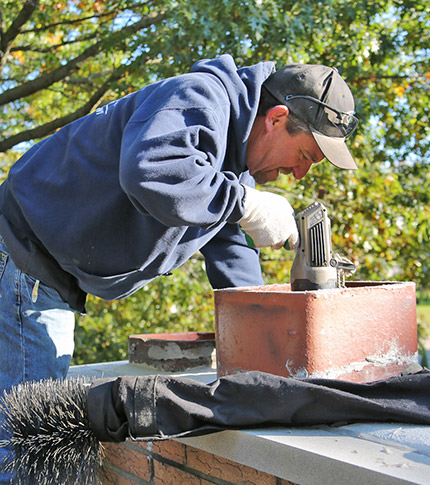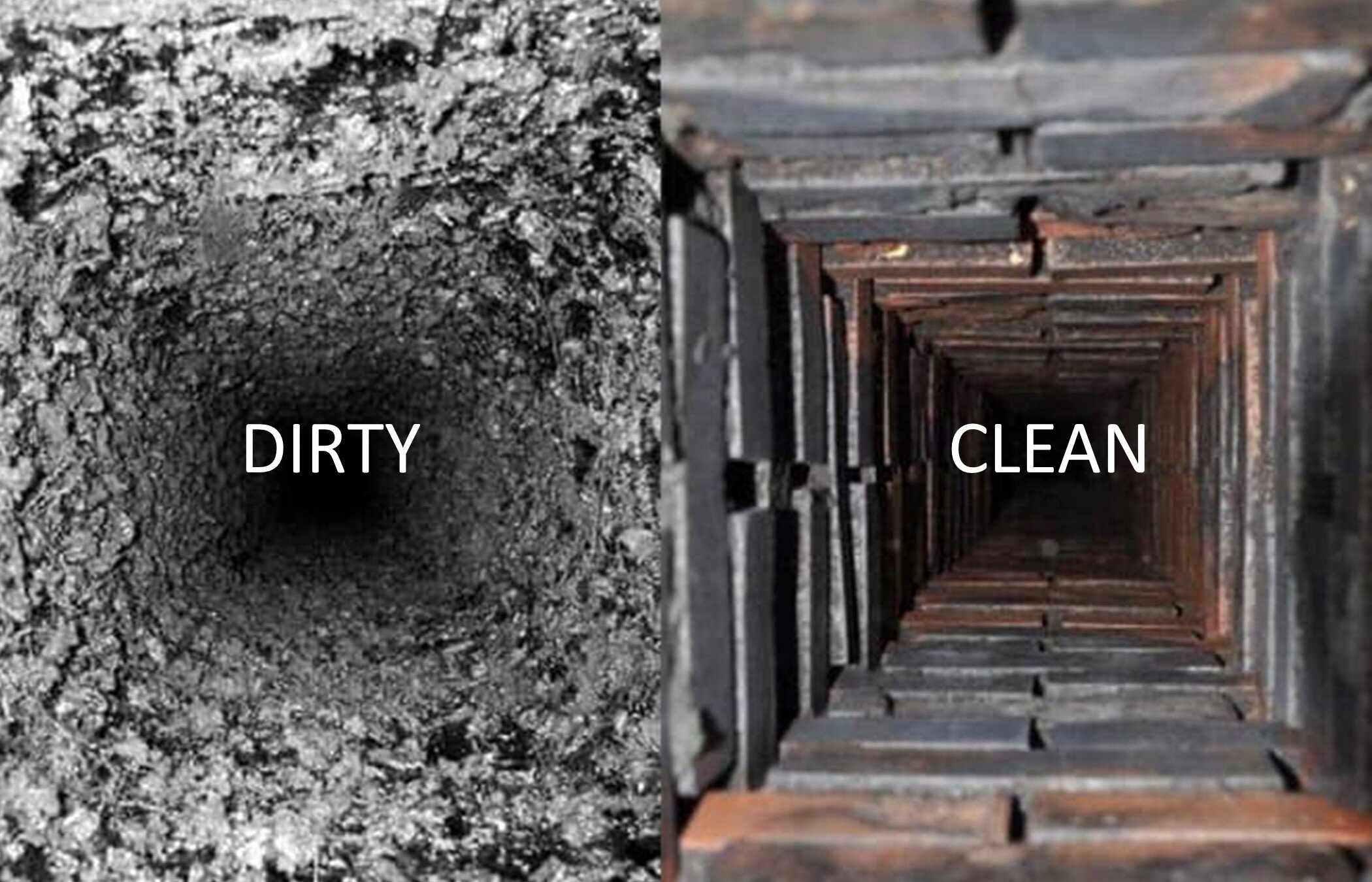Why Routine Smokeshaft Cleaning Is Vital for Home Safety
Regular chimney cleansing is an often neglected yet crucial facet of preserving a safe and secure and risk-free home environment. While it may not be the most interesting or glamorous task on your to-do listing, neglecting smokeshaft maintenance can have severe repercussions. Regular smokeshaft cleaning can assist extend the life-span of your chimney, conserving you from expensive fixings or replacements down the line.
Relevance of Regular Smokeshaft Cleansing
Routine chimney cleansing is important for maintaining a reliable and safe home atmosphere. Over time, creosote, an extremely flammable compound, accumulates inside the chimney (Chimney Clean Company Fremont). This deposit is a by-product of shedding timber and can build up on the inner walls of the chimney. It can position a severe fire threat if left unattended. Routine cleansing eliminates this creosote buildup and lowers the risk of chimney fires.
In enhancement to preventing fires, normal smokeshaft cleaning additionally makes sure the effective operation of your home heating system. When creosote builds up, it restricts the air movement via the smokeshaft, leading to poor combustion and lowered home heating efficiency.
Moreover, a clean smokeshaft promotes great indoor air quality. As the smokeshaft ends up being stopped up with creosote and particles, it can hinder the correct venting of harmful gases, such as carbon monoxide gas. These gases can leak into your home, posturing a significant wellness danger to you and your family. Normal smokeshaft cleansing guarantees that the air flow system is clear and working correctly, avoiding the accumulation of harmful gases.
Fire Threat: Build-up of Residue and Creosote
The accumulation of residue and creosote inside the chimney postures a considerable fire threat, as it can ignite and trigger a potentially damaging chimney fire. Soot is a black, carbonaceous substance that is formed when timber or fossil gas are melted. It contains great particles that can easily become air-borne and resolve inside the chimney. In time, these particles gather and form a layer of residue. Creosote, on the other hand, is a very combustible and sticky substance that is produced when wood or nonrenewable fuel sources are burned at reduced temperature levels. It is a byproduct of incomplete burning and can stick to the inner walls of the chimney.
Both soot and creosote are highly combustible. When a fire is lit in the fire place or oven, the warm and fires rise the chimney. These compounds can develop a smokeshaft and fire up fire if there is a significant accumulation of residue or creosote. The intense heat generated throughout a chimney fire can trigger the chimney to split or collapse, resulting in a potential residence fire. Additionally, the fires and sparks from the smokeshaft fire can get away through the chimney cap and fire up the roofing system or bordering combustible products.

Normal smokeshaft cleaning is vital to eliminate the buildup of residue and creosote and minimize the danger of a smokeshaft fire. A professional chimney sweeper will utilize specialized brushes and devices to completely cleanse the smokeshaft, eliminating any gathered debris. By keeping the chimney free and tidy from residue and creosote, homeowners can make certain the risk-free and efficient procedure of their fire place or range, while additionally securing their home from the risks of a chimney fire.
Poor Ventilation and Carbon Monoxide Gas Dangers
Insufficient air flow in chimneys can posture major risks of carbon monoxide gas poisoning. Carbon monoxide (CARBON MONOXIDE) is an anemic, odor-free gas that is created when gas such as wood, gas, or oil are burned. When chimneys are not properly ventilated, carbon monoxide can accumulate and leak right into the living spaces of a home, causing possibly dangerous circumstances.
One of the primary reasons for inadequate smokeshaft air flow is the accumulation of debris, such as residue and creosote, which can block the flue and limit the circulation of air. This can result in incomplete combustion and the manufacturing of higher levels of CO. Furthermore, a smokeshaft that is sporadically cleansed can have a buildup of other obstructions, like bird nests or leaves, further hindering the appropriate ventilation of hazardous gases.
The impacts of carbon monoxide gas poisoning can be subtle and easily mistaken for various other illnesses, such as the flu. Signs may include migraines, lightheadedness, exhaustion, complication, and nausea or vomiting. Long term exposure to high levels of carbon monoxide can bring about unconsciousness, organ damages, and also fatality.
Regular chimney cleaning and evaluation are essential in maintaining appropriate ventilation and decreasing the risk of carbon monoxide poisoning. By removing any type of obstructions and ensuring that the flue is clear, home owners can appreciate a risk-free and healthy living atmosphere. It is recommended to have chimneys evaluated and cleansed a minimum of yearly by an expert chimney i was reading this sweeper to guarantee optimum security and satisfaction.
Expanding the Life-span of Your Smokeshaft
To make sure the longevity of your smokeshaft, appropriate maintenance and treatment are necessary. Routine smokeshaft cleansing is not only important for home safety and security however additionally for extending the life-span of your chimney. With time, creosote, particles, and soot can build up inside the chimney, leading to different problems that can significantly minimize its lifespan.
One of the main advantages of normal smokeshaft cleaning is the prevention of smokeshaft fires. If not gotten rid of, it can build up inside the smokeshaft and ignite, triggering a unsafe and potentially damaging smokeshaft fire.
Moreover, normal smokeshaft cleansing additionally helps to avoid clogs. When particles, such as fallen leaves, branches, or view perhaps tiny pets' nests, block the smokeshaft, it can prevent proper ventilation and air flow. This can result in an accumulation of unsafe gases, such as carbon monoxide gas, inside the home. By keeping the chimney clear and tidy, you can ensure proper air flow and lower the risk of carbon monoxide poisoning.
Along with stopping clogs and fires, routine chimney cleansing can likewise identify and address any kind of possible damage or damage. By evaluating the smokeshaft throughout the cleansing process, you can catch any kind of very early indicators of fractures, leaks, or architectural issues. Prompt repair work can be made to stop more damage and extend the lifespan of your smokeshaft.
Tips for Proper Smokeshaft Maintenance
For effective smokeshaft maintenance, it is very important to comply with a few essential tips to make sure the durability and safety and security of your smokeshaft. These ideas will certainly not just help you keep the effectiveness of your smokeshaft but additionally minimize the risk of smokeshaft fires and other prospective hazards.
To start with, it is critical to have your chimney checked and cleaned by a professional chimney sweeper a minimum of as soon as a year. A professional will have the ability to recognize any prospective issues such as creosote build-up, animal nests, or structural damages that can present a risk to your smokeshaft's efficiency and safety.
In enhancement to annual assessments, it is necessary to frequently inspect and cleanse your smokeshaft's flue and cap. The flue ought to be clear of any type of debris or blockages that can restrict airflow or create smoke to back up right into your home. The smokeshaft cap need to remain in good problem, firmly affixed, and devoid of any type of cracks or damage to avoid undesirable visitors such as birds or squirrels from entering your smokeshaft.
Moreover, it is necessary to use dry and seasoned timber for shedding in your fireplace. Wet or eco-friendly timber creates even more smoke and creosote, resulting in a greater threat of smokeshaft fires. In addition, avoid shedding materials such as trash, cardboard, or dealt with timber, as they can launch hazardous chemicals and damage your chimney.
Lastly, ensure that your smokeshaft is geared up with a sturdy spark arrestor to stop embers and sparks from escaping and possibly triggering a fire. Chimney Clean Company Fremont.
Following these suggestions for proper smokeshaft upkeep will help ensure the safety and long life of your smokeshaft and provide assurance for you and your family members.

Final Thought
In verdict, normal smokeshaft cleansing is crucial for keeping home safety and read the full info here security. The accumulation of residue and creosote can lead to fire risks, while poor ventilation can enhance the risk of carbon monoxide gas poisoning. By frequently cleaning up and preserving your chimney, you can extend its life expectancy and make certain the security of your home and family. It is important to adhere to proper chimney upkeep pointers to stop any potential risks.

One of the main benefits of routine chimney cleaning is the avoidance of smokeshaft fires - Chimney Clean Company Fremont. The smokeshaft cap should be in excellent problem, securely connected, and complimentary of any kind of splits or damage to avoid unwanted visitors such as birds or squirrels from entering your chimney